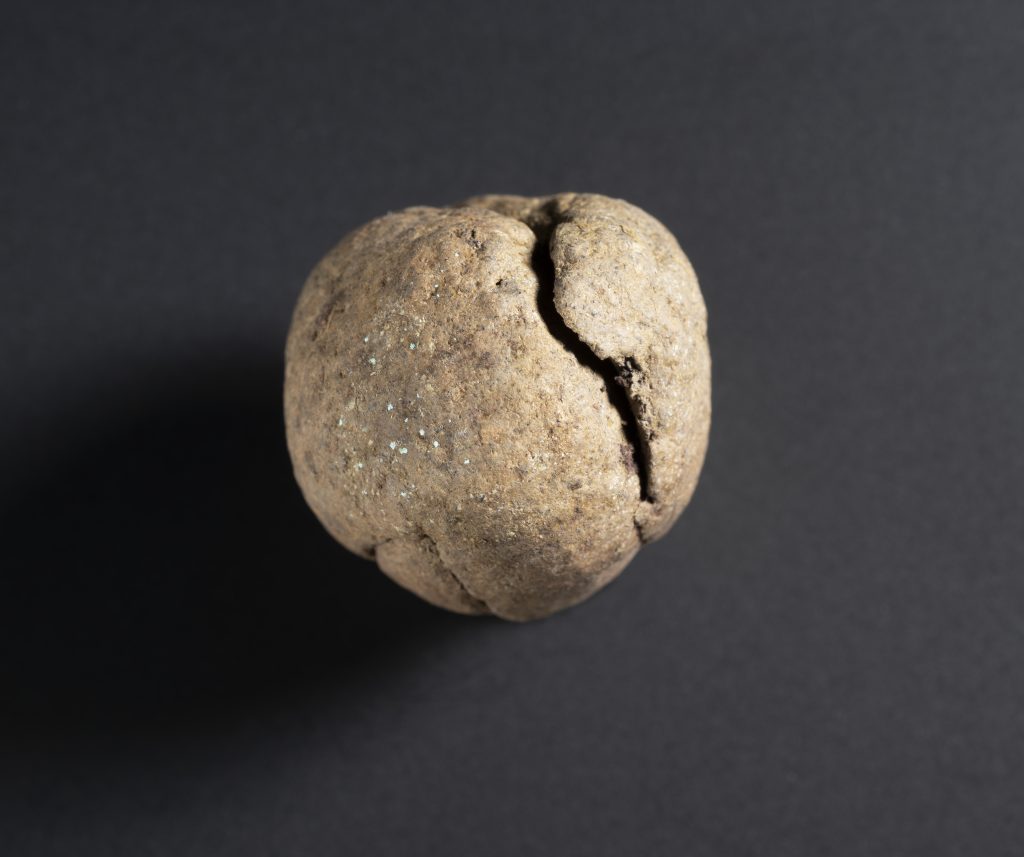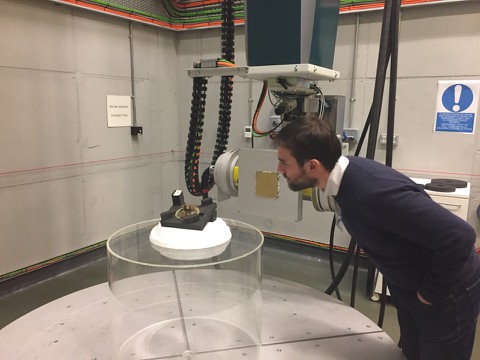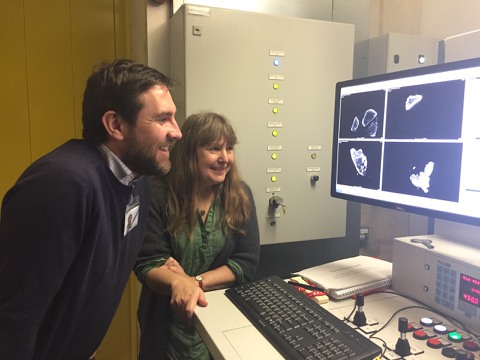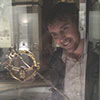This is the second of two posts tracking my research journey with the Galloway Hoard over the last two years (you can read the first here). We always knew that the Galloway Hoard would be important for enhancing our understanding of Scotland’s international connections in the 9th century AD, but some of the moments of revelation have been quite unexpected and taken us to unusual places. I left off last time showing how my research had taken me to the Metropolitan Museum in New York, transported into a new world of Islamic and ancient Mediterranean craft far from Viking-age Scotland.
Holy dirt-balls Batman!
In Autumn 2018, I went to visit the British Museum with Dr Mary Davis, the Galloway Hoard Conservator, to consult with scientists in the Scientific Research department. The standard response when I’ve presented the research opportunities for the Galloway Hoard is the joke, “Well that’s the next twenty years of your life sorted out”. I don’t know how many times I have heard that, but when that response comes from a team of experienced researchers and analytical scientists at one of the world’s largest museums there is a weight of seriousness behind the joke. But with that acknowledgment of the incredible research potential of this Hoard also comes an eagerness to help on everyone’s part. The 3D X-ray imaging equipment at the British Museum would be able to create 3D models, allowing us to minimise handling and remotely examine the inorganic objects like the rock crystal. We can use these models to virtually examine objects without disturbing the invaluable organic materials that so rarely survive in archaeological deposits and still wrap some of the most mysterious objects in the Galloway Hoard.
There were many highlights in what the 3D X-ray imaging revealed, however the dirt-balls found nestled within the silks and most exotic items in the lower half of the silver-gilt lidded vessel were probably one of the biggest surprises for everyone.

They seem like the most mundane (literally!) objects in the vessel and people keep asking me – why were two balls of dirt nestled in amongst this collection of exotic and valuable objects? I had a theory, but it would be difficult to prove. There are medieval records of pilgrims acquiring mud, earth or dirt that had been rubbed in the dust that formed in Christian shrines and underneath reliquaries. These earthen relics were one of the simplest and most popular mementos of pilgrimage, but this type of relic would not normally survive across the centuries – they would either turn to dust or moisture would cause them to dissolve. Had the air-tight and dry conditions within the sealed vessel in the Galloway Hoard preserved two of these earthen relics? Mary had examined the dirt-balls carefully and noticed tiny flecks of gold under the microscope – this was exactly the type of thing I hoped we might find – dirt that had been rolled in a saintly shrine might pick up traces of gilding flaked off a reliquary. But there were also two more practical explanations to consider – the dirt could have been used to gather up small particles of gold by a gold worker, or these gold traces had been transferred onto the dirt-balls from the golden and gilded objects in the vessel. The X-ray imaging laboratory at the British Museum had the ability to eliminate the possibility of transferral.

The X-ray imaging laboratory at the British Museum is big enough to house monumental Egyptian and Greek sculpture. I did feel a bit ridiculous carefully positioning these tiny balls of dirt on a turntable in the middle of that massive room. When I explained to Dr Dan O’Flynn, the X-ray imaging scientist, about the possibilities of the dirt-balls and how we hoped to see gold throughout the dirt matrix, not just on the surface, his interest was piqued. Other experts we had been working with all week began to gather for the results – it was so funny to see everyone now curious about the dirt-balls, in contrast to the gold and exotic rock crystal on my previous visit to the Met (see part one). But the motivation was the same: a desire to learn what these new and unusual survivals from the past can tell us about the people who made and handled them over a thousand years ago. There was a round of applause from the assembled crowd when we saw the tiny gold flecks scattered throughout the interior of the dirt-balls. On the screen they looked like two miniature galaxies, with previously unknown constellations of stars opening up whole new worlds of interpretation to us.

To better understand the dirt balls, another British Museum expert, Dr Caroline Cartwright, offered to use their scanning electron microscope (SEM) for further examination – this only deepened the mystery around them! Although both these balls are formed in a very similar way (like a child would roll Plasticine sausages into a ball), the gold in each has different characteristics – the gold in one ball has mercury present whereas the gold in the other does not. Yet more questions arose – do these differences mean that despite looking very similar they came from two different sources, two different shrines? If so, where should we be looking? To Rome? Perhaps even Jerusalem? Or maybe both? There are records of earthen relics brought back to Rome from pilgrimage to the Holy Land. Can we use advanced soil chemistry, or trace elements, to determine the origin of this dirt?
The practical gathering of tiny workshop remnants of gold remains a possibility, but the context of the Galloway Hoard lidded vessel, with its strange collection of older objects and unusual materials encourages further consideration of the earthen relic theory. There were other anomalies in the dirt matrix, such as shattered bone, which also encourage further testing of this theory.
As we always suspected, each startling discovery about the Galloway Hoard sparks new questions about the people who created and collected these objects, and the world in which the Hoard was assembled. The Galloway Hoard complicates simplistic narratives and reinforces that what we call the ‘Viking Age’ involves connections that span continents and objects whose use extended across several centuries. The golden threads of ideas and objects that we are tracing through this spectacular hoard will continue to connect more and more people, places and things.
